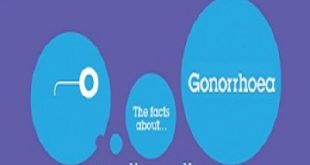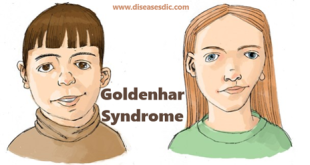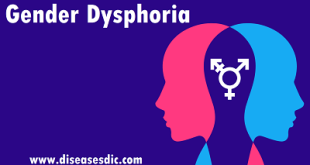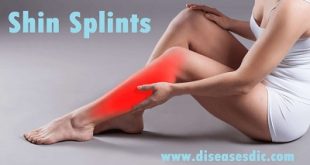Overview
Greenstick fracture is a type of bone fracture commonly observed in children due to their more flexible and pliable bones. Named after the way a young, green twig bends and partially breaks, this fracture occurs when the bone bends but doesn’t completely break, often leaving one side intact. The condition is typically caused by trauma or force applied to the child’s bones, resulting in symptoms like localized pain, swelling, limited mobility, and bruising. Diagnosis is usually confirmed through X-rays, which help assess the severity of the fracture. Due to the more resilient nature of children’s bones, greenstick fractures are usually less severe than fractures in adults and tend to heal relatively faster.
Epidemiology
Approximately 12% of all pediatric emergency department visits in the United States are due to musculoskeletal injuries. Fractures make up a large percentage of musculoskeletal injuries resulting in significant morbidity and complications. Greenstick fractures are most likely to be found in the pediatric population under 10 years of age but can occur in any age group, including adults. There is an equal incidence rate in female and male patients; however, male patients are more likely to sustain fractures.
Types of Greenstick Fracture
It can be classified into different types based on the direction and extent of the fracture. The main types of greenstick fractures include:
- Classic Greenstick Fracture: In this type, the bone bends and partially breaks on one side, while the other side remains intact. It is the most common type of greenstick fracture.
- Reverse Greenstick Fracture: This type is the opposite of the classic greenstick fracture. Here, the bone bends and partially breaks on the opposite side of the classic greenstick fracture, with the intact side located on the side of the force or impact.
- Buckle or Torus Fracture: A buckle fracture occurs when the bone gets compressed, causing it to buckle or deform on one side without a complete break. It is a stable type of fracture, and the bone retains its alignment.
- Plastic Deformation: In some cases, a greenstick fracture may not involve a clear line of partial breakage but instead results in plastic deformation. The bone might bend without a defined fracture line and may show some permanent shape changes.
It is important to note that the classification of greenstick fractures may vary slightly among medical professionals, but these are the main types commonly identified.
Pathology
Greenstick fractures occur when the force applied to a bone result in bending of the bone such that the structural integrity of the convex surface is overcome. The fact that the integrity of the cortex has been overcome results in fracture of the convex surface. However, the bending force applied does not break the bone completely and the concave surface of the bent bone remains intact.
This can occur following an angulated longitudinal force applied down the bone (e.g., an indirect trauma following a fall on an outstretched arm), or after a force applied perpendicular to the bone (e.g. a direct blow). This fracture is very different, and much less common, than the torus fracture that results in buckling of the cortex on the concave side of the bend and an intact convex surface.
Symptoms of Greenstick Fracture
The symptoms of a greenstick fracture are similar to those of other fractures, but they are usually less severe. Common signs include:
- Pain: The child may experience localized pain around the injured area.
- Swelling: Swelling might be observed around the site of the fracture.
- Limited mobility: The affected limb may be difficult to move due to pain and swelling.
- Bruising: Bruising might appear around the injury site.
Causes of Greenstick Fracture
Greenstick fractures in children are typically caused by trauma or force applied to their bones. The main causes include:
- Falls: Children are prone to falling during play, sports activities, or accidents. When they land on an outstretched hand or try to break a fall with an extended arm, it can lead to a greenstick fracture in the forearm.
- Sports Injuries: Participating in sports that involve physical contact or high-impact movements can increase the risk of greenstick fractures. Activities like football, soccer, basketball, skateboarding, or gymnastics can lead to falls or collisions that result in these fractures.
- Accidents: Various accidents, such as car accidents, bicycle accidents, or other mishaps, can subject a child’s bones to significant force and cause greenstick fractures.
- Child Abuse: In unfortunate cases of child abuse, deliberate physical harm may result in greenstick fractures or other types of injuries.
- Weaker Bones: Children have more flexible and softer bones compared to adults. Their bones are still in the process of developing and hardening, making them more susceptible to greenstick fractures.
It’s crucial for parents, caregivers, and teachers to promote a safe environment for children and take necessary precautions to prevent such injuries. In case of any accidents or suspected fractures, immediate medical attention should be sought to ensure proper diagnosis and appropriate treatment.
Risk factors
- Age: More common in children due to softer bones.
- Physical Activities: Sports or activities with impact increase the risk.
- Lack of Experience: Young kids learning to balance are at higher risk.
- Bone Health: Conditions affecting bone strength can contribute.
- Trauma or Impact: Falls or direct blows can cause greenstick fractures.
- Child Abuse: Intentional harm can put a child at risk.
- Genetic Factors: Some children may have a genetic predisposition to weaker bones.
Greenstick Fracture Complications
Here are the complications of greenstick fractures:
- Malunion: Bone may heal in the wrong position.
- Growth Problems: Fracture can affect bone growth in kids.
- Delayed Healing: Healing may take longer than usual.
- Infection Risk: Possibility of infection at the fracture site.
- Nerve or Blood Vessel Injury: Chance of nerve or vessel damage.
- Pain: Child may experience discomfort during healing.
How to diagnosis greenstick fracture?
Diagnosing a greenstick fracture involves a combination of physical examination, medical history assessment, and imaging studies. Here’s how the diagnosis is typically done:
- Physical Examination: The doctor will perform a thorough physical examination, checking for signs of injury, such as swelling, tenderness, bruising, and deformity at the suspected fracture site. They will also assess the range of motion and stability of the affected limb.
- Medical History: The doctor will inquire about the circumstances surrounding the injury, such as how it occurred and any associated symptoms like pain or difficulty moving the limb.
- X-rays: X-ray imaging is the most common and effective method to diagnose greenstick fractures. X-rays can reveal the extent of the fracture and help the doctor determine the appropriate treatment plan. However, in some cases, the fracture may not be fully visible on initial X-rays, and additional imaging, such as a CT scan or MRI, may be required.
- CT Scan or MRI (if needed): In complex or hard-to-see cases, a computed tomography (CT) scan or magnetic resonance imaging (MRI) might be used to get a more detailed view of the fracture.
- Bone Scan (rarely): In certain situations, a bone scan may be used to assess bone healing and identify any other fractures or bone abnormalities.
Treatment of Greenstick Fracture
The treatment of a greenstick fracture aims to promote proper healing and alignment of the bone. The specific treatment depends on the severity and location of the fracture. Common treatments for greenstick fractures include:
- Immobilization: In most cases, the affected limb will be immobilized using a cast or splint. This helps keep the bone in the correct position and prevents further movement, allowing the fracture to heal properly.
- Closed Reduction: If the fracture is displaced or angulated, the doctor may perform a closed reduction. During this procedure, the bone fragments are manipulated and realigned without the need for surgery. Once the correct alignment is achieved, the limb is immobilized with a cast or splint.
- Surgical Intervention: In more severe cases, or if the fracture is unstable and cannot be adequately realigned with a closed reduction, surgery may be necessary. Surgical intervention involves the use of pins, screws, or plates to stabilize the fractured bone fragments and allow for proper healing.
- Pain Management: Pain relief is an essential part of treatment. Over-the-counter pain medications or prescription pain relievers may be prescribed to manage discomfort during the healing process.
- Follow-up Care: Regular follow-up appointments with the doctor are crucial to monitor the healing progress and ensure the bone is mending correctly.
- Physical Therapy: After the cast or splint is removed, physical therapy may be recommended to help regain strength, range of motion, and functional use of the affected limb.
It is essential to follow the doctor’s instructions closely and attend all follow-up appointments to ensure a successful recovery. With proper treatment and care, most greenstick fractures heal well, and children often resume their normal activities once the bone has fully healed.
Prevention of Greenstick Fracture
Greenstick fractures can be prevented by preventing falls. Some of the measures which the child should take to prevent falls are:
- Avoid playing on smooth surfaces.
- Wear sensible shoes or footwear which do not slip.
- Remove hazards, such as electric cords, boxes or other such objects from walkways.
- Turn on the light while moving in dark places or rooms.
- Use assistive devices, such as handrails while climbing the stairs.
 Diseases Treatments Dictionary This is complete solution to read all diseases treatments Which covers Prevention, Causes, Symptoms, Medical Terms, Drugs, Prescription, Natural Remedies with cures and Treatments. Most of the common diseases were listed in names, split with categories.
Diseases Treatments Dictionary This is complete solution to read all diseases treatments Which covers Prevention, Causes, Symptoms, Medical Terms, Drugs, Prescription, Natural Remedies with cures and Treatments. Most of the common diseases were listed in names, split with categories.







